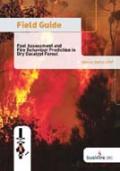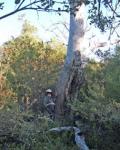Fire Updates Newsletter
Current and previous editions
Issue No: 30
2009-03
Project Vesta is a study of forest fire behaviour undertaken in the Jarrah forests of Western Australia, using the resources of the Department of Environment and Conservation Western Australia (DEC), and ENSIS Bushfire Research section of the CSIRO.
Issue No: 29
2009-02
A group of researchers from various state fire agencies and research organizations has been assembled by the Bushfire Cooperative Research Centre to look at key issues arising out of the February 2009 Victorian bushfires.
Issue No: 28
2009-02
The decision of the Australian Capital Territory Court of Appeal in NSW v West represents the first of what is likely to be many judgments in the litigation arising from the 2003 Canberra bushfires.
Issue No: 27
2008-11
Human factors are those factors that influence both how the human body operates (physiological factors such as dehydration, fatigue etc.) and how the human mind operates (psychological factors such as situation awareness, planning, etc). The main focus of this Bushfire CRC research is on psychological factors.
Issue No: 26
2008-11
During bushfires and prescribed burns fire fighters are potentially exposed to toxic air contaminants emitted from the combustion of natural forest fuels. This places a significant Occupational Health & Safety (OHS) responsibility on fire agencies on how to manage their operations to comply with OHS regulations.
Issue No: 25
2008-05
Fire is a natural process that has been shaping the southwest of Western Australia for thousands of years. In modern times, land management agencies have to manage fire for a range of objectives including the protection of biodiversity.
Issue No: 24
2008-03
The mallee and heath landscape of Ngarkat Conservation Park in south-eastern South Australia was deliberately set alight this month in one of the most comprehensive fire research exercises undertaken in shrubland fuels in Australia
Issue No: 23
2008-02
Fire is a natural or anthropogenic disturbance that plays a fundamental role in the establishment and survival of wet eucalypt forests in Tasmania. Whether the source of this fire has been humans or lightning, fire has occurred in the landscape for millennia over a range of spatial and temporal scales.
Issue No: 22
2007-12
The research report “The effectiveness and efficiency of aerial firefighting in Australia Part I” was posted on the Bushfire CRC website in June, and continues to receive a large number of downloads.
Issue No: 21
2007-06
By targeting ‘at risk’ urban communities with information and education about bushfires, fire agencies have aimed to increase overall levels of community resilience and ensure that people are adequately prepared in the event of a serious bushfire.
Issue No: 20
2007-05
Around three million hectares of Australia’s temperate eucalypt forests and woodlands across five states (Western Australia, South Australia, Victoria, New South Wales and Tasmania) are displaying a decline in health and vigour.
Issue No: 19
2007-05
Unplanned fires can result in the destruction of property and loss of life. As well, they may create fire regimes (based on interval, season and intensity) that cause adverse impacts on vegetation and animal communities. But fires can also create beneficial results for biodiversity, especially if well planned.













